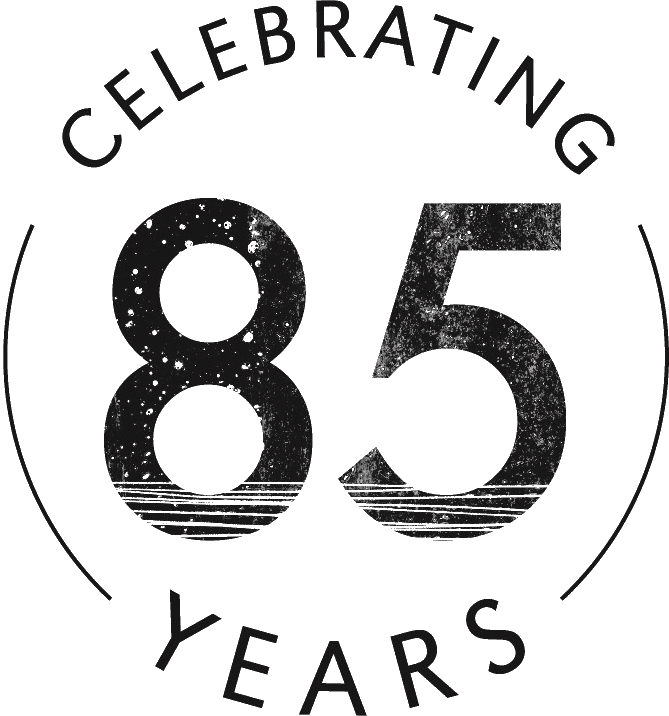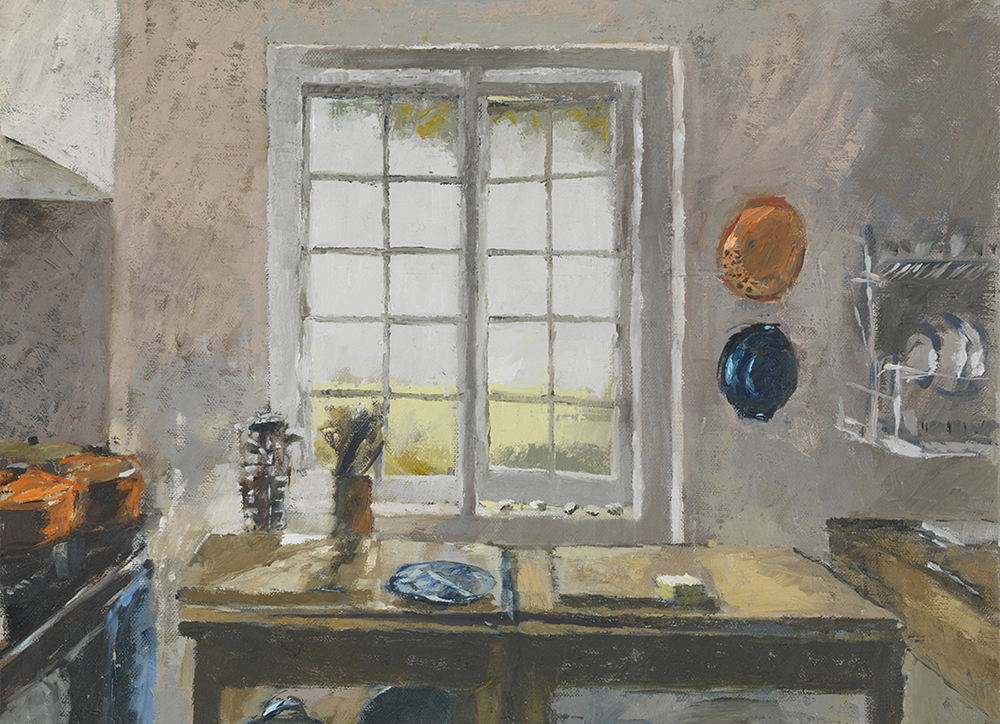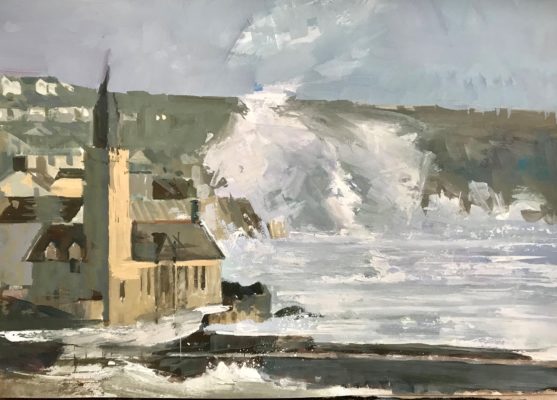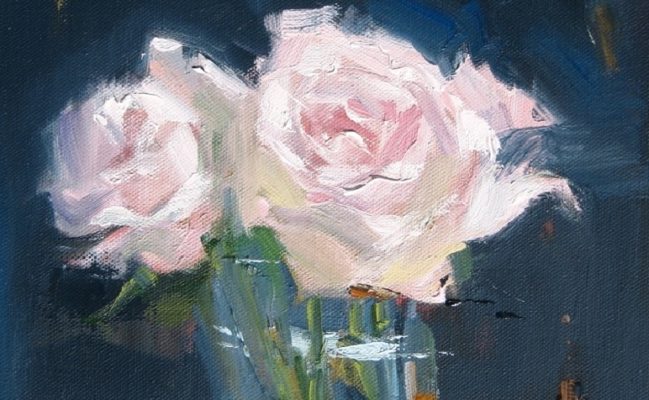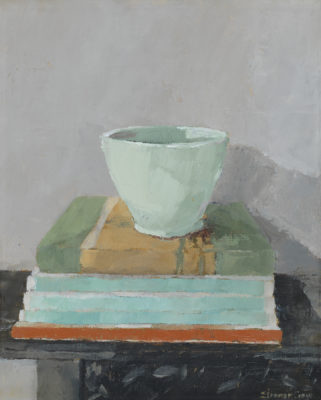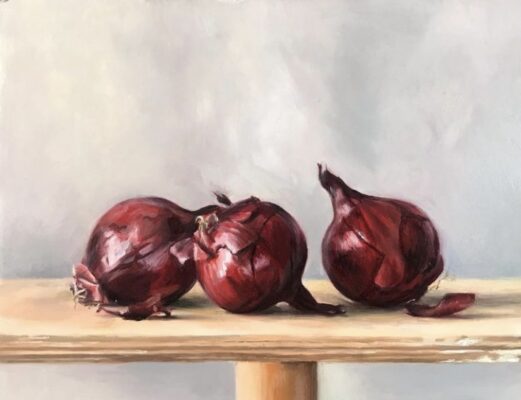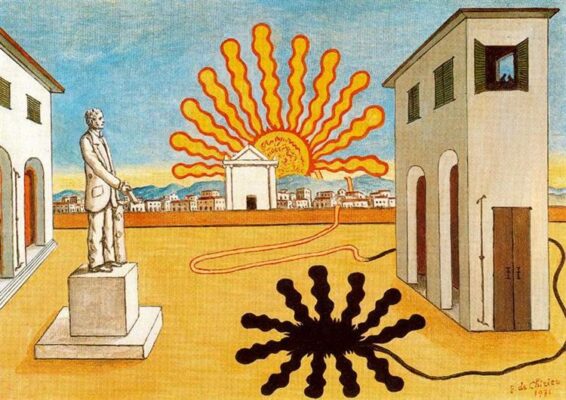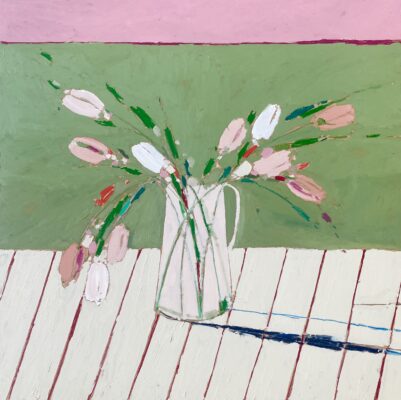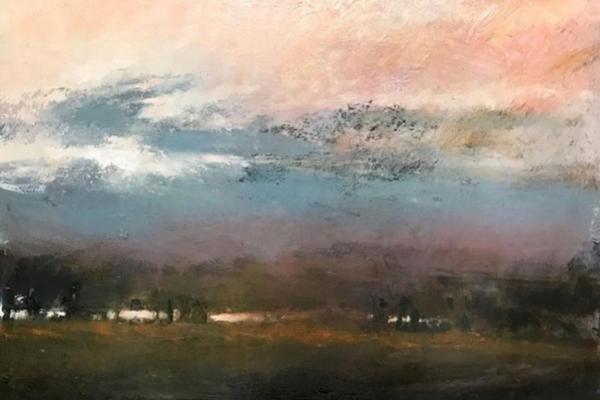Course details
Step into the quiet drama of light falling through a window and discover how it transforms an interior into a subject rich with atmosphere, tone, and meaning.
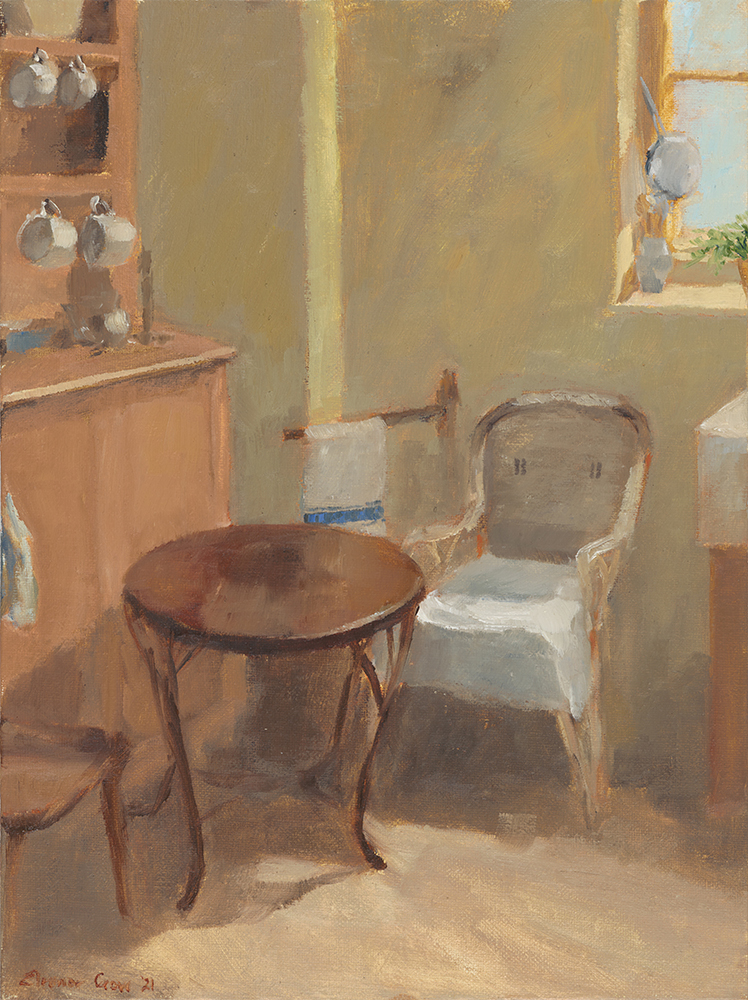
Framed by Light invites artists to explore the poetry of natural light as it moves across objects and architecture, revealing how shadow, reflection, and subtle shifts in tone can bring still life and space to life on the canvas.
Throughout the course, we will work from three carefully composed still life and interior settings. Each setting will be placed next to one of the studio’s windows, representing a unique corner of a domestic scene. These setups will be influenced by the quality of light at different times of day. Students will develop observational drawings and small oil studies, working with the fall of light from the window onto a still life setting, as well as a corner or section of an interior space, building a deeper understanding of composition, tonal relationships, and colour mixing in oils.
The course focuses on the dynamic relationship between light and form and how this affects tone and colour—how to paint contre-jour (against the light), how to respond to changes in focus, cropping, and spatial depth, and how to capture the materiality of surfaces through sensitive brushwork. We will consider not just the still life arrangement and the window itself, but also the view beyond and how it contributes to the overall composition.
Each student will begin with one setting but rotate through all three during the course, allowing for a rich and varied experience in painting still life within an interior environment shaped by light.
Throughout the course, we will draw inspiration from artists such as Vanessa Bell, Mary Potter, Gwen John, and Francis Campbell Boileau Cadell—painters who sensitively explored interior space and the emotional resonance of the domestic.
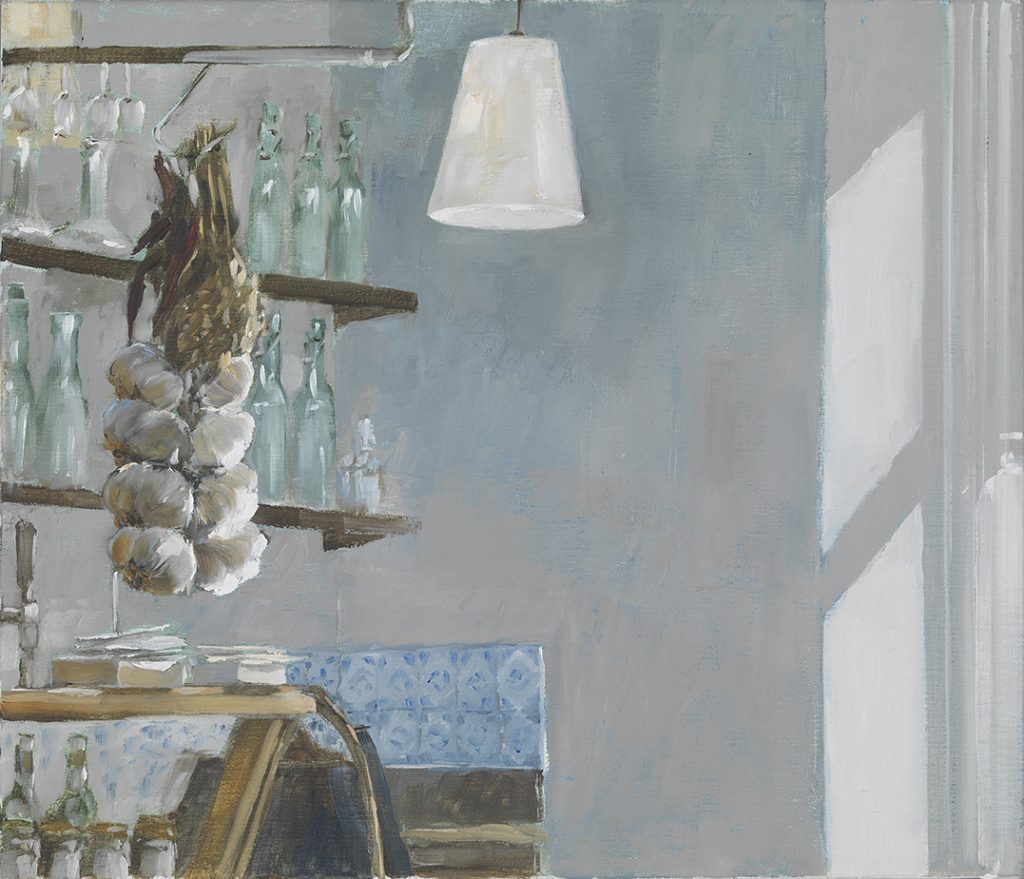
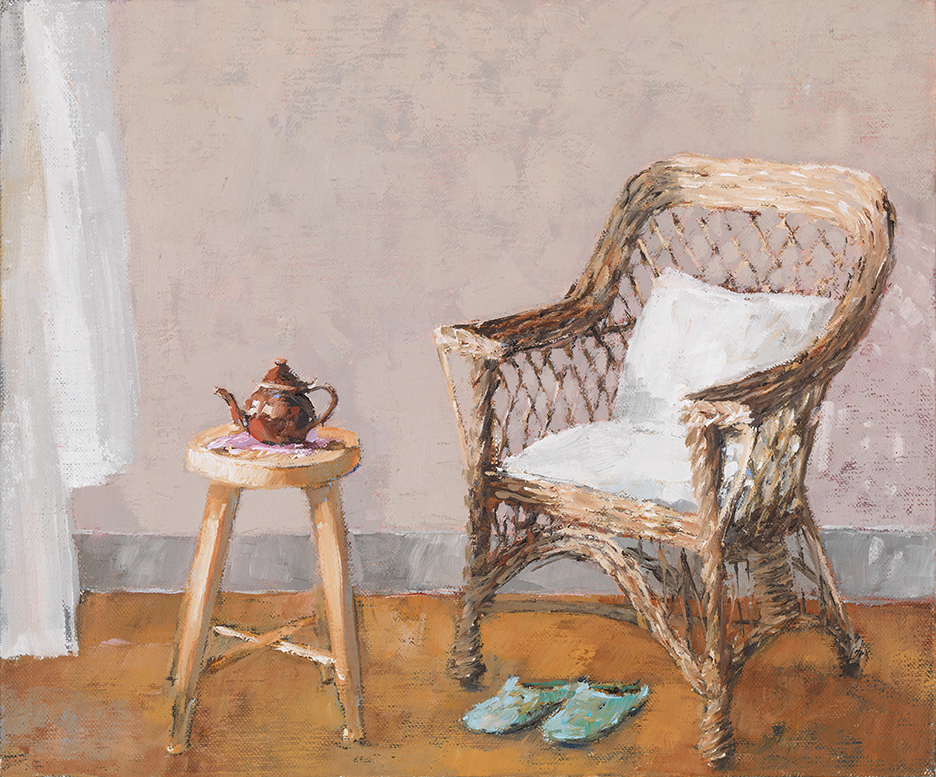
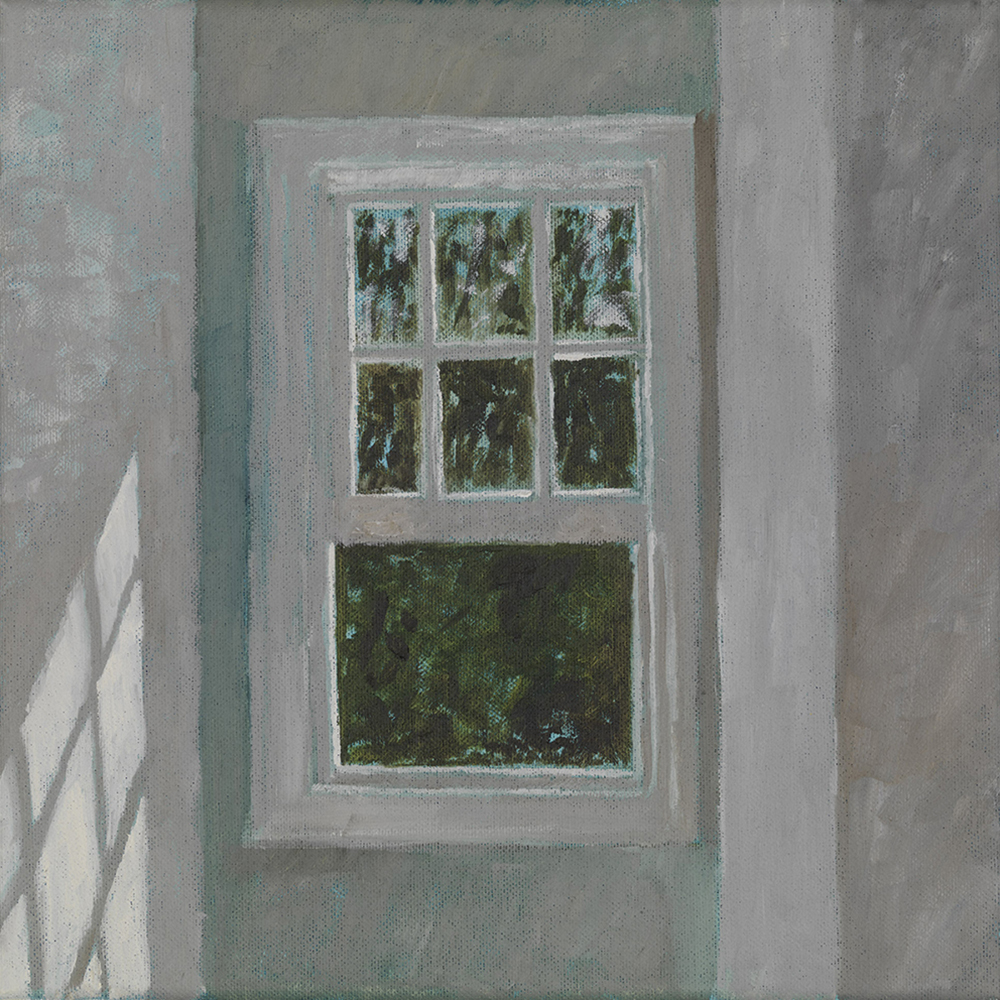
Day to day plan
This is a rough indication of what to expect over the course.
However sometimes the structure of the days may alter depending on the nature of the group and weather.
Day 1
Begin by drawing from the interior setting in black and white, focusing on tone and composition. Mix oil paints to create a small tonal monochrome painting (20cm x 20cm). Further mix colours to introduce a wider palette and create a small study using oil paints.
Day 2
Work on a slightly larger format (30cm x 30cm) and continue to develop colour mixing skills while creating a more resolved study of the setting. In the afternoon, there will be the opportunity to move to one of the other studio set-ups and work on a different painting.
Day 3
Continue to work in oils with a third setting, create a new painting in response to the light, tone and colour of the space. Produce new colour mixes in oil as required to suit the changing atmosphere. The final day will also include time to clean up, review and reflect on work produced and prepare and pack finished pieces for transportation.
What will I learn?
- How to observe and paint the fall of natural light from a window across a still life and interior setting
- How to work confidently with tone to create depth, atmosphere, and structure in a painting
- Colour mixing in oils to achieve subtle, light-responsive palettes
- How to use sensitive brushwork to respond to the texture of objects and their surrounding environment
- Techniques for painting contre-jour (against the light) and understanding its impact on tone and colour
Who would this course suit?
This course is ideal for anyone interested in working from observation and exploring how light transforms a still life or interior. With supportive guidance throughout, you’ll develop confidence in oil painting, tone, and composition.
Ahead of your oil painting course with us if you would like to brush up your skills, you are entitled to 25% off our online “Getting Started with Oil Painting” course here. You will be given a code after purchasing our studio oil painting course.
Our studio ‘Beginner’s Oil Painting’ courses can be found here.
Taught by
What to Bring
Our studios are fully equipped and we provide you with all the materials you need for your course. However, if you have a favourite set of brushes or any specialist materials that you would prefer to use, please bring them with you.
Timings and Breaks
The first day starts at 10am and finishes at 4.30pm, please aim to arrive ten to fifteen minutes before the start time.
All course days after that start at 9.30am and finish at 4pm and there will be an hour for lunch. There are plenty of nearby places to eat and we will serve tea and coffee at break times during the day.
FAQs
Studio Courses
Can I bring my dog?
The studios are busy places with lots of equipment and not suitable for bringing a pet dog. We can accommodate assistance dogs with prior notice so we can make suitable adjustments. If you wish to bring an assistance dog please call 01736 797180 or email [email protected]
How can I get help in choosing a course?
Our friendly expert staff are always happy to discuss your needs and our courses in more detail to help you with your decision. Please call us on 01736 797180
How do I get my work home?
Tutors have special techniques for transporting oil paintings and for our 3 day courses we will give you a plastic folder with a handle. These are also available to purchase for £3.50 or do bring a portfolio.
Please note: For the course Bigger, Bolder, Braver with Boo Mallinson, we will provide a large A1 size plastic folder for your work but please consider how you will be able to transport the larger canvases home safely before signing up for the course as we will not be able to store large paintings in the studio. On this course you will be painting on a 50cms x 50cms and a 1m x 1m canvas alongside smaller pieces.
For international students we are happy to arrange transportation of your work back home, postal costs will be borne by you.
What do I need to bring?
Absolutely nothing! All materials and aprons are provided although some people do like to bring their own set of brushes.
What do I do for lunch?
Courses allow an hour’s break for lunch and there are numerous places nearby or you are welcome to bring a packed lunch into the studio.
What times do courses run?
Most of our courses start at 10am and end at 4.30pm on the first day. Subsequent days we start at 9.30am ending at 4pm.
Short workshops start at 10am in the Summer and 9.30am/ 1.30pm during September festival
Do you have to be experienced to come to the School?
The School is a very friendly and welcoming place for all ages and experience. Our drop-in life classes and August half-day workshops are ideal for those wanting to have a go for the first time. Most of our longer courses are also fine for novices as class sizes are small and our tutors are experienced in managing varying abilities within a group.
If any of the courses do need a bit of experience we flag this up on the website.
Booking a Course
How can I reserve a place?
We will hold a provisional reservation for 24 hours if you give us a call whilst you find accommodation. Otherwise please book online or by telephone 01736 797180.
You can reserve a place with a £100 deposit; balance is due 12 weeks before course start date.
About St Ives
Where do I park?
The nearest long stay public car parks are the Island and Barnoon Long Stay Car Park, both a 5 minute walk away. In the peak summer months it may be easier to park at Trenwith Car Park by the leisure centre and walk down into town. If you don’t fancy the walk up the hill at the end of the day there is a shuttle bus which runs from outside the cinema.
How do I get there?
Public Transport: If you are coming from further afield the main train line runs into St Erth which is a 15 min taxi ride away or you can take the St Ives Bay Line which runs approx. every 30 minutes. The School is a 10 minute walk from St Ives station.
Driving: M5 will take you to Exeter where we recommend that you take the A30 across Bodmin Moor and into Cornwall. After passing Hayle, leave the A30 at St Erth roundabout for St Ives. Turn right at the second roundabout. This road will take you through Lelant and Carbis Bay into St Ives.
Where can I stay?
St Ives has a huge selection of hotels, guest houses and self catering accommodation to choose from. Please browse the art holidays St Ives section on our website and give us a call if you would like any help.
